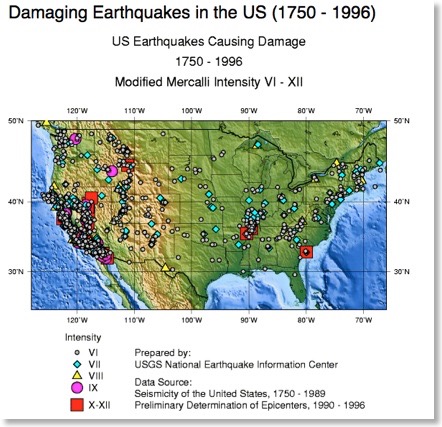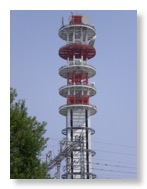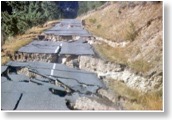NAB/CTIA Hurricane Sandy Twitter Feud

While the East Coast recovers from Hurricane Sandy, the PR forces at both NAB and CTIA are using the occasion for a Twitter war to take advantage of people’s misery, not doubt with an eye on the pending incentive auctions. The above 2 tweets showed up in my Twitter Digest. The top tweet from NAB’s Dennis Wharton, Executive VP, Media Relations, links to this Reuters article entitled “Hurricane Sandy disrupts Northeast U.S. telecom networks” which includes the line “Cellphone service was spotty for top wireless providers Verizon Wireless, AT&T Inc and T-Mobile USA, a unit of Deutsche Telekom, according to some customers.” However the article did not focus on cellphone issues and dealt with wirelines, CATV, and cellular issues.
The “Official CTIA Tweet” links to this Slate article entitled “The Biggest Surprise of Hurricane Sandy: How Well Cellphone Networks Worked”. This article contrast dramatically with the article on the front page of today’s WSJ “After Sandy, Wired New Yorkers Get Reconnected With Pay Phones:Coin-Eating Retro Devices Baffle Some, Frustrate Many; Moment Merits a Tweet”
Like the terrorist attacks of 2001 and the blackout of 2003, Sandy has exposed the limitations of the cellphone. Not only does it require electricity for charging, but the cellphone also won't pick up service if a major storm has knocked out the telecommunications infrastructure that provides reception.
Apparently no one really knows quantitatively how well the cell phone networks are doing post-Sandy. Cnet.com reports:
Genachowski said that as of 10 a.m. ET today, 25 percent of the nation's wireless companies' cell sites were not operational in 158 counties in 10 states from Virginia to Massachusetts. This information comes from the carriers themselves, which report outages to the FCC as part of the agency's Disaster Information Reporting System (DIRS).Genachowski and David Turetsky, who is the FCC's public safety and home security bureau chief, explained that the number of cell sites and cable customers without service was greater in areas where there has been more storm damage. And they emphasized that the storm is still ongoing as it travels westward to states such as Michigan. And they are expecting more disruptions as the storm progresses.
The officials wouldn't comment specifically on how many wireless customers have been affected by the outages. But they said service is likely to get worse for customers before it gets better. Even customers who may have service now in some affected areas could be without it in the coming days as backup batteries run out of power.
The main issue affecting the restoration of service to cell sites is the fact that commercial power may be out for several days or even weeks in some areas. Between 7 million to 8 million people are reportedly without power in areas affected by the hurricane, officials said.
Some cell sites have already been running on backup power. But the FCC was unable to say exactly how many. Still, the commercial power issues mean that these sites could also go down in the next day or so, especially if repair crews are unable to get to sites that need battery replacements and generators that need refueling.
HuffPo has a similar report.
CTIA’s Chris Guttman-McCabe, Vice President, Regulatory Affairs, was on NPR this morning defending CTIA’s court appeal to block the post-Katrina FCC emergency power rule. Harold Feld, who was also on NPR this morning, describes this issue in a post entitled “If your cell tower loses power, be sure to thank CTIA and the D.C. Circuit”
CTIA and NAB: This is not the time to be name calling or be defensive of past actions. Please stop your Twitter war. Let’s focus on restoring service and on how to make communications policy more responsive to national needs, not just the near term problems of your industry.
UPDATE
The November 2 WSJ has an article entitled “Outages Expose Wireless Carriers' Backup Plans”.
Some interesting quotes:
Regulators and phone companies have sparred since Hurricane Katrina over how best to ensure the resiliency of wireless networks. The industry has largely won, for example, fighting back regulations that would have required backup power at cell towers. …
Wireless carriers have released little data this week to allow broader conclusions to be drawn of how the networks are holding up in various locations. While electric utilities publish regular updates on the number and location of customers without power, carriers have made only vague statements about the state of their networks. …
Carriers say they've worked in recent years to make their networks more reliable, installing more secure infrastructure and redundant communications paths. But in Washington, they have fought efforts to make them more accountable in disasters. After widespread cellphone outages in the aftermath of Hurricane Katrina, the FCC tried to require wireless carriers to install backup batteries at all of their sites. Carriers sued to block the rule, and the government eventually dropped its attempt to implement it. …
Last year, the FCC proposed that the industry explore wireless networks that can be operated from blimps and unmanned aircraft in a disaster. The wireless industry pushed back, arguing such systems would cause interference. Wireless carriers argue they don't need rules to ensure the reliability of their networks, because it's in their best interest to do so. …"We're pulling up the safety net behind us, and we don't have a new safety net in case something goes wrong," said Harold Feld, legal director for consumer group Public Knowledge.
It isn’t often when the WSJ is sympathetic with the Genachowski FCC and quotes Harold Feld and not the CTIA staff.
Let me also recommend the evolving discussion of the above article on the WSJ site which contains a variety of view points on this issue, some supportive of the industry, some not.
CTIA leadership, you can impress your membership by winning this type of court cases, but is it really worth it? Is it really in the interest of your members or the public?
UPDATE 2
On November 2, the NY Times, which rarely agrees with WSJ on anything, published an article on cellphone outages entitled “Steaming at Hit-or-Miss Service” -- also quoting Harold Feld.
In an emergency, a lack of cellphone reception can be dangerous, especially as more people have chosen to snip landlines out of their budgets. About 60 percent of American households have landlines, down from 78 percent four years ago, according to Chetan Sharma, an independent mobile analyst. …
“With the new networks we’ve prized keeping costs down, we’ve prized flexibility and we’ve prized innovation,” said Mr. Feld, who wrote a blog post on Monday anticipating cell tower problems. “But we have not put stability as a value when we have been pushing to have these networks built out.”
Mr. Feld noted that after Hurricane Katrina in 2005, the F.C.C. recommended that carriers install backup batteries on their transmission towers that would last 24 hours, among other measures. But the carriers objected, presumably because they did not want to spend the money, he said. (Of course, 24 hours would not have been enough in many areas hit by the latest storm.)
In general, the carriers say it is in their own interest to fortify their networks for emergency situations, but Mr. Feld said this incentive was not enough.
The unreliability of wireless networks may point to a bigger problem. Over the years, the phone companies have fought off regulators who want to treat them as utilities, arguing that if they are going to stay innovative, they cannot be burdened with the old rules that phone companies dealt with in the landline era. But as a consequence, there are almost no rules about what carriers have to do in an emergency, said Harold Feld, senior vice president for Public Knowledge, a nonprofit that focuses on information policy.
Seismicity & Telecom Network Vulnerability
Today’s magnitude 5.8 earthquake in the Washington area came just as I was putting my thoughts together on seismic risks and telecom networks. This was in part inspired by my May trip to Japan, including Tokyo and Sendai, and discussions and observations while there. (During the Vietnam War my military service dealt with underground nuclear test detection so seismic issues are not entirely new for me.)
While we usual think about seismic threats as only applying to California and Alaska, so very large earthquakes have occurred elsewhere during the history of our country. These include the 1811 magnitude 7.7 New Madrid (Missouri) earthquake and the 1886 magnitude 7.2 Charleston (South Carolina) earthquakes. Thus there is a real risk of a major earthquake in lots of places although with a small probability.

I am concerned that the telecom industry and regulators have not connected this fact with the large scale phasein of fiber optics as the dominant long haul communications technology as well as a key factor in cellular backhaul. In the past, long distance microwave had a major role in this area and that is diminishing. Microwave systems can be readily made earthquake resistant by strengthening the towers that hold the antennas and the nearby equipment buildings.


In an earthquake that results in ground fissures, fiber optic lines miles apart could suffer related damage so an analytical assumption that they are independent would be wrong. Realistically, fiber facilities sometimes end up in the same conduit so independence of reliability can be more suspect.
During the Cold War the Pentagon took actions with FCC to influence network design first to improve reliability in a post nuclear attack scenario and later to inhibit microwave interception by the Soviets. The former was done under the AT&T monopoly, but the later was done after the onset of real competition for AT&T.
While such direct government intervention into network design might not be appropriate in this case, it appears that there is no hard data on the relative use of fiber versus microwave for long haul transmission (or cellular backhaul) in areas with a risk of large earthquakes. Perhaps industry and the appropriate federal agencies should open a dialogue on the topic.



![Validate my RSS feed [Valid RSS]](valid-rss-rogers.png)

